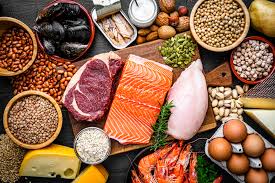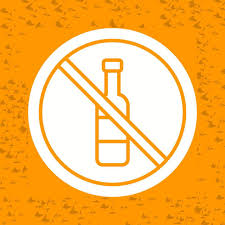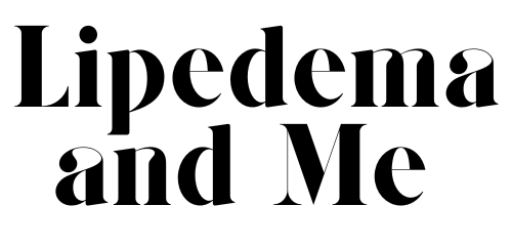Lipedema isn’t specifically caused by poor diet – but what you eat can have a huge impact on how you feel. From reducing inflammation and Lipedema pain, to easing daily swelling, nutrition plays a key role in managing symptoms and supporting your overall health.
When I started learning about Lipedema nutrition, I wasn’t looking for a miracle cure. I just wanted to feel better. Over time, I discovered that small, sustainable changes in the way I eat made a big difference to how my body responded.
The Role of Inflammation in Lipedema
Lipedema is closely linked to chronic inflammation. That means the foods you eat can either:
- 🔥 Fuel inflammation (and make symptoms worse), or
- 💧 Help calm the system and support lymphatic flow
Choosing anti-inflammatory foods can help:
- Reduce daily swelling
- Decrease pain and heaviness
- Support immune function and skin health
- Improve energy and digestion
Lipedema-Friendly Foods to Focus On
You don’t need to follow an extreme Lipedema diet plan – just build your meals around foods that nourish and reduce inflammation.
Anti-Inflammatory Staples:
- Leafy greens: spinach, kale, rocket
- Cruciferous veg: broccoli, cauliflower, cabbage
- Berries: blueberries, strawberries, raspberries
- Healthy fats: avocado, olive oil, nuts, seeds
- Omega-3s: salmon, sardines, chia, flax
- Lean proteins: chicken, turkey, eggs, tofu
- Herbs & spices: turmeric, ginger, garlic
Top Tip: Try to build your plate using real, whole foods most of the time.

What to Limit or Avoid
Some foods are known to trigger inflammation or cause water retention, making Lipedema symptoms worse.
Common Triggers:
- Refined sugar: cakes, biscuits, soft drinks
- Ultra-processed foods: ready meals, packaged snacks
- Refined carbs: white bread, pastries, pasta
- Vegetable oils: sunflower, soybean, corn oil
- Alcohol: increases inflammation and fluid retention
- Dairy and gluten (for some people): can cause inflammatory response
This doesn’t mean you need to cut everything out overnight – it’s about finding what works for your body. I avoid alcohol as much as possible, I find it helps me keep inflammation to a minimum. Obviously I still enjoy a gin and tonic every now and again though!

What About Keto or Low-Carb Diets?
Many women with Lipedema find relief following a low-carb or Keto-style way of eating. The best diets for Lipedema reduce inflammation, stabilise blood sugar, and can reduce overall swelling – especially when paired with Lipedema compression and movement.
That said, you don’t need to be strict Keto. Even just lowering carb intake, swapping bread for veg, or cutting processed sugar can make a big difference.
I follow a relatively low-carb, high-protein diet – some might call it a Mediterranean style diet – and it’s helped with my energy levels, mental clarity, and daily swelling.
Eating Mindfully for Lipedema
But it’s not just about what you eat – but how you eat, too. Eating in a calm state, chewing well, and noticing how food makes you feel are all part of managing life with Lipedema.
- Don’t skip meals – stable blood sugar helps
- Drink water regularly (aim for 2/3 litres per day)
- Limit late-night snacking
- Track your flare-ups – are they food-related?
- Take notes when certain foods worsen pain or swelling
Lipedema-Friendly Meal Ideas
If you need inspiration, here are some go-to meals I rely on:
- Breakfast: Greek yogurt with berries, chia seeds & cinnamon
- Lunch: Roasted chicken salad with olive oil dressing
- Dinner: Grilled salmon and steamed greens
- Snacks: Hard-boiled eggs, nuts, cucumber slices & hummus
It’s Not About Perfection – It’s About Support
Let’s be clear: Lipedema isn’t your fault. It’s hormonal. You didn’t cause it, and you can’t cure it with food alone. But choosing to eat in a way that supports your body can help reduce inflammation and slow down how quickly Lipedema progresses.
You deserve to feel comfortable in your own skin – and if food can help reduce just one ounce of pain or heaviness, that’s a Lipedema win for sure!
Lipedema Nutrition Is About Supporting – Not Controlling – Your Body
There’s no one-size-fits-all diet for Lipedema nutrition. But by choosing anti-inflammatory foods, reducing processed triggers, and tuning into your body’s needs, you can create a way of eating that genuinely helps you feel better from the inside out – without restriction or guilt.
Whether you’re starting from scratch or just looking to optimise your plate, know that small changes can lead to big relief.
Disclaimer: My blogs talk about Lipedema, diet, surgery and much more. I’m talking from my point of view to help women, and remind them they are not alone. I am not a medical professional, so the content above is from my own perspective with research I have done into the topic. It’s not meant as medical advice, you should always consult your doctor or a specialist for both your diagnosis, and a treatment plan.


Gracias muy interesante